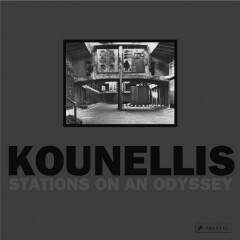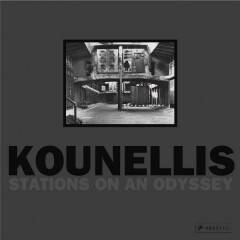
- Afhalen na 1 uur in een winkel met voorraad
- Gratis thuislevering in België vanaf € 30
- Ruim aanbod met 7 miljoen producten
- Afhalen na 1 uur in een winkel met voorraad
- Gratis thuislevering in België vanaf € 30
- Ruim aanbod met 7 miljoen producten
Zoeken
Omschrijving
This book presents the definitive retrospective of the avantgarde European artist Jannis Kounellis' work as seen within its spatial context.
Born in Greece in 1936, Jannis Kounellis witnessed some of the most tumultuous periods in Modern art and radically impacted the art scene since the 1960s. Based in Rome since 1956, he began working on canvas, but after his Alphabet paintings Kounellis abandoned the two-dimensional surface. He became a central figure of the 'Arte Povera' movement, developing a vocabulary of modest materials such as coal, wool, and coffee, and even incorporated living animals like parrots and horses into this art. Kounellis' work took on a spatial dimension with his assemblages reflecting industrial and agrarian societies, as well as moral and social concerns. This riveting monograph includes an in-depth and richly illustrated survey of 22 installations in factories, warehouses, churches and castles all over the world, including Rome, Chicago, Barcelona, Cologne, Mexico City, Berlin, and London. Each location represents a unique event where Kounellis' work and the architectural environment merge to create a dialogue between the artist and the space. The book offers readers a unique opportunity to observe the evolution of Kounellis' work as the artist explored increasingly unconventional - and often controversial - methods for delivering his social and political messages.
Show More
Show Less
Born in Greece in 1936, Jannis Kounellis witnessed some of the most tumultuous periods in Modern art and radically impacted the art scene since the 1960s. Based in Rome since 1956, he began working on canvas, but after his Alphabet paintings Kounellis abandoned the two-dimensional surface. He became a central figure of the 'Arte Povera' movement, developing a vocabulary of modest materials such as coal, wool, and coffee, and even incorporated living animals like parrots and horses into this art. Kounellis' work took on a spatial dimension with his assemblages reflecting industrial and agrarian societies, as well as moral and social concerns. This riveting monograph includes an in-depth and richly illustrated survey of 22 installations in factories, warehouses, churches and castles all over the world, including Rome, Chicago, Barcelona, Cologne, Mexico City, Berlin, and London. Each location represents a unique event where Kounellis' work and the architectural environment merge to create a dialogue between the artist and the space. The book offers readers a unique opportunity to observe the evolution of Kounellis' work as the artist explored increasingly unconventional - and often controversial - methods for delivering his social and political messages.
Show More
Show Less
Specificaties
Betrokkenen
- Auteur(s):
- Illustrator(s):
- Uitgeverij:
Inhoud
- Aantal bladzijden:
- 360
- Taal:
- Engels
Eigenschappen
- Productcode (EAN):
- 9783791350127
- Verschijningsdatum:
- 20/08/2010
- Uitvoering:
- Hardcover
- Afmetingen:
- 327 mm x 420 mm
- Gewicht:
- 3750 g

Alleen bij Standaard Boekhandel
+ 221 punten op je klantenkaart van Standaard Boekhandel
Beoordelingen
We publiceren alleen reviews die voldoen aan de voorwaarden voor reviews. Bekijk onze voorwaarden voor reviews.








